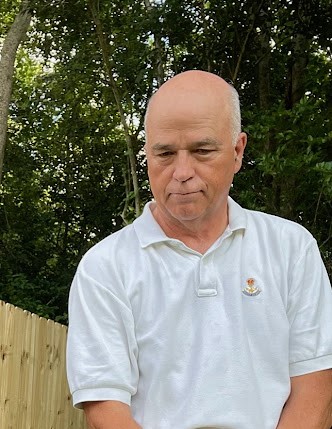When Should I Think About Golf Lessons?
I remember standing on the first tee box, gripping my driver like it was a baseball bat, and wondering why everyone else seemed to make this game look so effortless. Sound familiar? If you’re reading this, you’re probably asking yourself the same question I wrestled with for months: when is the right time to invest in golf lessons? I had taken a few when I was a kid, but bottom line is that I didn’t PAY for them.
But now that I’m older – I wish I’d started lessons much earlier than I did. After years of playing golf and helping other beginners navigate this beautifully frustrating sport, I’ve learned that there’s never really a “wrong” time for lessons, but there are definitely optimal moments when professional instruction can transform your game from a source of frustration into genuine enjoyment- or at least MORE enjoyment!
The Early Signs You’re Ready for Professional Help
You know that feeling when you’re hitting balls at the driving range, and despite your best efforts, something just feels… off? That’s your golf swing sending you a message, and it’s time to listen. I’ve been there, trust me. After months of trying to figure things out on my own, I realized that some problems simply can’t be solved through YouTube videos and well-meaning advice from my buddies!
Struggling with Basic Fundamentals
When I first started playing, I thought grip and stance were just minor details – alas, was I wrong. If you find yourself constantly adjusting your grip during a round, or if your ball flight is wildly inconsistent (one shot slicing into the trees, the next hooking into the water), these are clear indicators that your fundamentals need professional attention.
The grip is literally your only connection to the club, yet most recreational golfers never learn to hold it properly. I spent countless hours at the range, wondering why my shots were going everywhere except where I aimed- honestly, I still do sometimes! But, it wasn’t until my first lesson that I discovered my grip was causing most of my problems. A professional instructor can spot these fundamental issues in minutes – issues that might take you months or even years to identify on your own.
Your setup and posture are equally crucial. Are you hunching over the ball? Standing too far away or too close? These might seem like small details, but they’re the foundation of every shot you’ll ever hit. Think of it like building a house – if your foundation is crooked, everything else will be too.

Your Scores Have Plateaued
Here’s something that happened to me, and I bet it’s happened to you too: you start shooting consistently in the same range, maybe the high 90s or low 100s, and no matter what you do, you can’t seem to break through to the next level. This plateau effect is one of the strongest signals that it’s time for professional guidance.
When you’re stuck at the same scoring level for several months, it usually means you’ve developed compensations in your swing that are preventing further improvement. These compensations might work sometimes, but they’re not consistent enough to lower your scores significantly. A good instructor can identify what’s holding you back and provide specific drills and techniques to break through that barrier.
I remember being stuck shooting around 95-100 for almost a year. It was incredibly frustrating because I felt like I was practicing regularly and trying to improve. What I didn’t realize was that I was practicing my mistakes, ingraining bad habits deeper and deeper. Sometimes you need fresh eyes to see what you can’t see yourself. That is probably the most valuable thing about having a pro help you.
Timing Your First Golf Lesson
The timing of your first lesson can make a huge difference in your golf journey. I’ve seen golfers wait too long and develop hard-to-break habits, and others who jumped in too early and felt overwhelmed. Finding that sweet spot is crucial for getting the most value from your investment.
Starting as a Complete Beginner
If you’re completely new to golf, congratulations – you’re in the best possible position to start lessons! I know it might seem counterintuitive to take lessons before you’ve even tried playing, but hear me out. Starting with proper instruction from day one means you won’t develop the bad habits that plague most self-taught golfers.
Think about it this way: would you try to learn piano without any instruction, just by watching other people play? Golf is a complex motor skill that requires precise coordination, timing, and technique. Starting with a clean slate allows your instructor to build your swing correctly from the ground up.
When I work with complete beginners, I’m always amazed at how quickly they progress compared to golfers who’ve been playing incorrectly for years. There’s no unlearning required – just pure, focused learning. You’ll develop muscle memory for the correct movements rather than having to fight against ingrained bad habits.
After Playing Solo for a Few Months
On the other hand, if you’ve been playing on your own for a few months, you’re also in a great position for lessons. You’ve experienced the game enough to understand its challenges, and you’ve probably identified specific areas where you’re struggling. This self-awareness makes you an ideal student because you can provide valuable feedback to your instructor about what feels difficult or unnatural.
I often recommend that golfers play 5-10 rounds on their own before taking lessons. This gives you enough experience to ask intelligent questions and helps you appreciate the instruction you’re receiving. You’ll understand why certain techniques matter because you’ve experienced the consequences of not doing them correctly.
However, don’t wait too long. If you’ve been playing regularly for six months or more without instruction, you’ve likely developed some habits that will need to be corrected. While this isn’t impossible, it does make the learning process more challenging and potentially more expensive.

What Golf Lessons Can Actually Fix
Let’s get specific about what professional instruction can do for your game. Too many golfers have unrealistic expectations about lessons, thinking they’ll instantly transform into scratch players. The reality is more nuanced, but the benefits are absolutely worth the investment when you understand what to expect.
Swing Mechanics and Consistency
The most obvious benefit of golf lessons is improved swing mechanics. A qualified instructor can analyze your swing and identify the specific technical issues that are causing your problems. But here’s what I wish someone had told me earlier: lessons aren’t just about fixing what’s wrong – they’re about building consistency in what’s right.
Your natural swing might produce good shots sometimes, but consistency comes from understanding the mechanics and practicing them correctly. An instructor can help you understand why certain shots work and others don’t, giving you the knowledge to make adjustments on the course.
I used to hit great shots occasionally, which kept me hopeful that I was improving. But those great shots were essentially accidents – I couldn’t repeat them consistently because I didn’t understand what I’d done differently. Professional instruction taught me to recognize the feeling of a proper swing, making those good shots reproducible rather than random.
Consistency also means understanding your misses. Every golfer has patterns in their bad shots, and a good instructor can help you identify these patterns and minimize their severity. You might never eliminate every bad shot (even pros don’t), but you can learn to make your misses less costly.
Course Management and Mental Game
Here’s something that surprised me about golf lessons: they’re not just about hitting the ball better – they’re about playing smarter. Course management and mental game instruction can drop strokes from your score immediately, often more effectively than swing changes.
A good instructor will teach you how to think your way around a golf course. This includes club selection, understanding when to be aggressive versus when to play conservatively, and developing a pre-shot routine that builds confidence. These skills are often overlooked by weekend golfers, but they’re absolutely crucial for shooting lower scores.
The mental side of golf is huge, and it’s something I wish I’d addressed earlier in my golf journey. Learning to manage expectations, deal with bad shots, and maintain focus throughout an entire round can dramatically improve your enjoyment of the game. Many golfers can hit good shots on the range but struggle to transfer that performance to the course due to mental barriers.
Reading Greens and Club Selection

Two specific areas where instruction pays immediate dividends are green reading and club selection. These skills directly impact your scoring, and they’re much easier to learn with guidance than through trial and error.
Reading greens is part art, part science. An instructor can teach you to identify subtle slopes, understand how grass type affects ball roll, and develop a consistent approach to putting. These skills alone can save you several strokes per round.
Club selection is equally important. Learning to factor in conditions like wind, pin position, and lie can help you make smarter decisions that keep you out of trouble. I used to automatically grab the club that would reach the pin, regardless of the situation. Now I think about the smart play first, which has significantly reduced my penalty strokes. And I am aware that I am calling it “club selection”- but that means more than just pulling the right one out of the bag!
Choosing the Right Type of Lesson
Not all golf lessons are created equal, and choosing the right format for your learning style and goals is crucial for getting the most value from your investment. I’ve tried different types of instruction over the years, and each has its place depending on your situation.
Group Lessons vs Private Instruction
Group lessons are often the most cost-effective way to get started, especially for beginners. You’ll learn alongside other golfers of similar skill level, which can make the experience less intimidating and more social. I actually started with group lessons, and I appreciated being able to watch other students make mistakes and learn from their corrections too.
The downside of group lessons is that you won’t receive as much individual attention. If you have specific issues that need addressing, or if you learn better with one-on-one instruction, the group format might not be ideal. However, for basic fundamentals and general improvement, group lessons can be excellent value.
Private instruction is more expensive, but it’s completely customized to your needs. Your instructor can focus entirely on your specific issues, adjust the pace of instruction to match your learning style, and provide immediate feedback on every swing. I switched to private lessons after I’d established basic fundamentals, and the personalized attention helped me break through several scoring plateaus.
Consider your personality and learning style when making this choice. Are you comfortable making mistakes in front of others, or do you prefer privacy while learning? Do you thrive on social interaction, or do you focus better without distractions? Your answer to these questions should guide your decision.
Video Analysis and Technology-Based Learning
Modern golf instruction often incorporates technology like video analysis, launch monitors (this is the go-to) and swing analysis software. These tools can provide incredibly detailed feedback about your swing and ball flight, making abstract concepts much more concrete.
Video analysis was a game-changer for me personally. Being able to see my swing from different angles helped me understand what my instructor was trying to correct. Sometimes you think you’re making the adjustment they’ve suggested, but video reveals that you’re not changing as much as you thought.

Launch monitors provide immediate feedback about ball speed, launch angle, spin rate, and other technical aspects of your shots. This data can help you understand the cause-and-effect relationship between swing changes and ball flight. However, don’t get too caught up in the numbers – they’re tools to support learning, not ends in themselves.
Some instructors rely heavily on technology, while others prefer a more traditional approach. Neither is inherently better, but consider which style resonates with you. Do you respond well to data and technical analysis, or do you prefer feel-based instruction? The best instructor for you will match your learning preferences.

Making the Most of Your Investment
Golf lessons represent a significant investment, both financially and in terms of time. To get the maximum return on that investment, you need to approach lessons strategically and be prepared to put in the work between sessions.
Preparing for Your First Lesson
Preparation can make a huge difference in the value you get from your lessons. Before your first session, spend some time honestly assessing your current game. What specific problems are you experiencing? What goals do you have for your golf game? Being able to communicate these clearly to your instructor will help them tailor the lesson to your needs.
I also recommend playing a few rounds just before starting lessons so that your current challenges are fresh in your mind. Take notes about patterns you notice – do you consistently miss putts to the right? Are your drives always slicing into the rough? These observations will give your instructor valuable information about where to focus.
Don’t try to fix everything at once. I made this mistake early on, asking my instructor to help with my driver, irons, and putting all in the same lesson. It’s much more effective to focus on one or two specific areas and master them before moving on to other aspects of your game.
Come to your lesson with realistic expectations. You won’t transform overnight, and you might actually play worse for a few rounds while you’re implementing changes. This is completely normal and part of the learning process. Think of it as an investment in long-term improvement rather than expecting immediate results.
Practice Between Sessions
Here’s something crucial that many golfers overlook: the real learning happens between lessons, not during them. Your lesson is where you learn what to practice, but the actual improvement comes from repetition and reinforcement of those concepts on your own time.
I learned this lesson the hard way. After my first few golf lessons, I would practice sporadically and then be frustrated when my next lesson felt like starting over. Once I committed to regular practice sessions focused specifically on what my instructor had taught me, my improvement accelerated dramatically.
Quality practice is more important than quantity. Thirty minutes of focused practice on specific drills is more valuable than two hours of mindlessly hitting balls. Keep notes from your lessons and refer to them during practice. Many instructors will give you specific drills or feelings to work on – make these the focus of your range sessions.
Don’t just practice at the driving range. If your instructor is working on your short game, spend time on the practice green. If course management is a focus, play more rounds and consciously apply what you’ve learned. The driving range is great for working on mechanics, but golf is ultimately played on the course.
The journey of improving at golf through professional instruction has been one of the most rewarding aspects of my experience with this game. Yes, it requires an investment of time and money, but the improvement in both your scores and your enjoyment of golf makes it worthwhile. Whether you’re a complete beginner or someone who’s been struggling with the same issues for years, there’s never been a better time than now to take that first lesson.
Remember, every golfer’s journey is different. What worked for me might not be exactly what works for you, but the principles remain the same: start with good fundamentals, practice with purpose, and don’t be afraid to invest in professional guidance. Your future self on the golf course will thank you for making that decision today.
The most important thing is to start. Whether you take your first lesson next week or next month, the key is making that commitment to improvement. Golf is a game we can play and enjoy for decades, and the investment you make in lessons now will pay dividends for years to come. Trust me on this one – I only wish I’d started sooner.
Frequently Asked Questions
How much should I expect to spend on golf lessons? Golf lesson costs vary significantly depending on your location and the instructor’s experience level. Generally, you can expect to pay $50-150 for a group lesson and $75-200 for private instruction. While this might seem expensive, consider that just a few strokes improvement per round can make the game much more enjoyable and potentially save you money on lost golf balls- HA! (nothing like a good justification for my wife!) I always tell people to view lessons as an investment in decades of future enjoyment rather than just a current expense.
How many lessons will I need to see real improvement? This really depends on your starting point and how much you practice between lessons. Most beginners see noticeable improvement after 3-5 lessons, but building lasting change typically takes 6-10 sessions spread over several months. I’ve found that consistency matters more than quantity – taking a lesson every 2-3 weeks with regular practice in between is more effective than cramming multiple lessons into a short period without adequate practice time.
Should I take lessons during the off-season or wait until I’m playing regularly? Off-season lessons can actually be incredibly valuable! This is when you can focus purely on technique without the pressure of immediate on-course performance. I’ve had some of my best breakthrough moments during winter lessons because I wasn’t worried about my next round. Plus, instructors often have more availability and may offer better rates during slower months. Just make sure you have access to adequate practice facilities to reinforce what you’re learning. And I will also add, is there really an “off” season?





